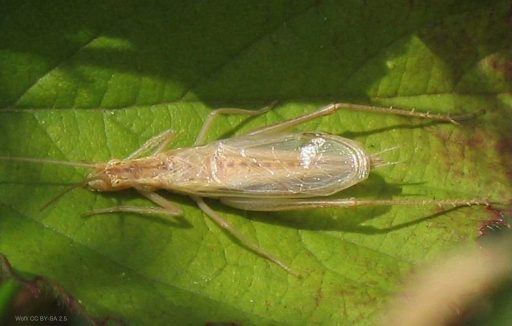
Have you ever thought about how a tiny cricket can make so much noise? Researchers have found that male tree crickets use leaves to make baffles that double the volume of their calls. You could call them cricket megaphones.
Cricket wings are resonance structures reverberating with the vibration caused by rubbing the wings together. This reverberation is like the body of a violin, but the sound is weak because the insect is so small. To make a baffle, the male cricket cuts a hole in a leaf and then crawls halfway through the hole, so its wings cause the leaf to vibrate like a loudspeaker. The advantage is that female crickets are attracted to the males with the loudest call.
The discussion among biologists is about whether this qualifies as tool use. Rittik Deb, an ecologist at the National Centre for Biological Sciences in Bangalore, India, says crickets show that sophisticated behaviors aren’t just for big complex brains. Deb says his work “really turns that idea on its head.”
Not everything about this behavior is beneficial to the cricket because increasing the volume of their calls makes them sitting ducks for predators like geckos and spiders. It would seem that this controls the cricket population, but it provides a food source for other living things. For that reason, it appears that evolutionary processes would eventually put a stop to cricket megaphones.
A more likely scenario is that the behavior is programmed into the crickets’ DNA to keep a balance in nature. In places where geckos and/or spiders are in abundance, the cricket population remains small. In Australia, we saw large numbers of geckos and large spiders in the homes of people with whom we stayed. We did not see insect problems in those same homes. In America, we have much to learn about the natural controls that God has built into our world. As more evidence unfolds, we see that human attempts to control insects with chemicals are unnecessary.
— John N. Clayton © 2021
Data from Science News, January 16, 2021.

 Those of us who live in the United States Midwest are familiar with a very large spider species that we see frequently see in our sheds and outdoor equipment. These spiders have a creamy or golden cast with stripes on their heads and brown, gray, and black markings. Wolf Spiders are One of God’s Dandy Designs.
Those of us who live in the United States Midwest are familiar with a very large spider species that we see frequently see in our sheds and outdoor equipment. These spiders have a creamy or golden cast with stripes on their heads and brown, gray, and black markings. Wolf Spiders are One of God’s Dandy Designs.